As promised, I am getting back into the swing of things with writing again, and will kick it off with a photo essay of Kharkiv’s architecture.
Despite repeated appeals to Microsoft to unlock my account, they still have yet to be helpful, so I am still locked out of my writing notes of up to a little over a month ago, but I will still have some things for you folks over the coming days, including a long overdue update on my armored ambulance quest and fundraiser, and stories from the front line. Hopefully my other stories are of interest too, a lot of my front-line stories at least have to have a delay for OpSec reasons, and unfortunately, some of them will have to wait until the book, after the war. Nonetheless, I should have some good ones for you there, although I must admit, I am hoping to get access to my notes I took before going ahead and writing some of those, but I won’t let that stop me. I just have a few other posts to put up first. If Microsoft still isn’t being helpful in unlocking my account at that point, I will forge ahead without my notes.
When I went to upload photos of Kharkiv, I discovered that I had over one hundred, so I decided to split them into at least one post on architecture, another on art seen on the street, and perhaps another post or two. Of course, it can be argued that architecture itself is a form of art, and we will see that here, aside from the sculptural architectural details that are very artistic in and of themselves.
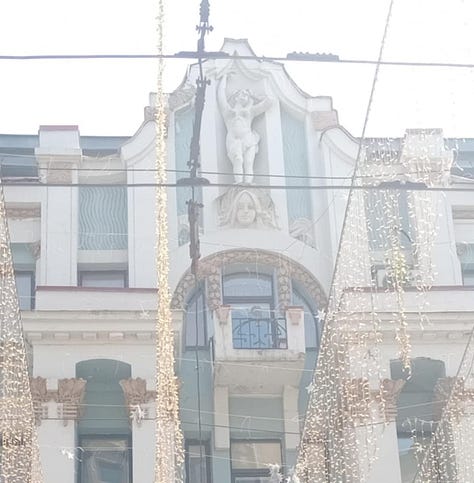
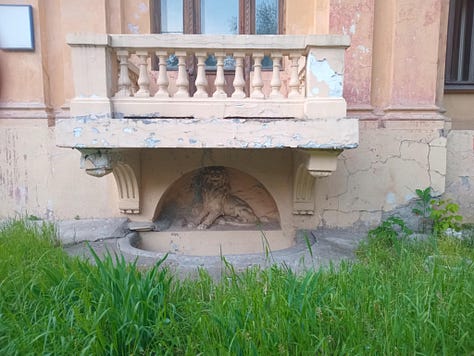

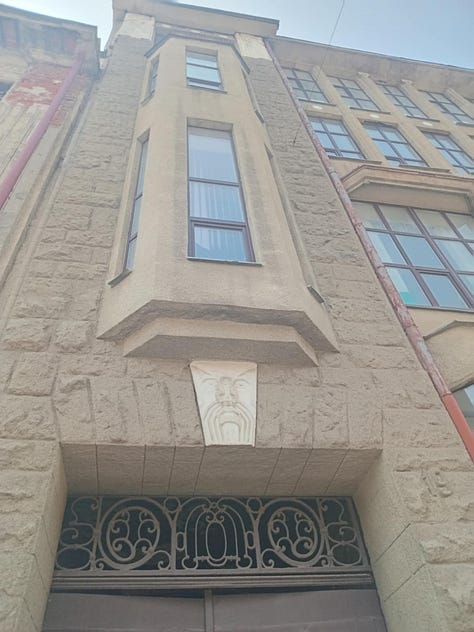
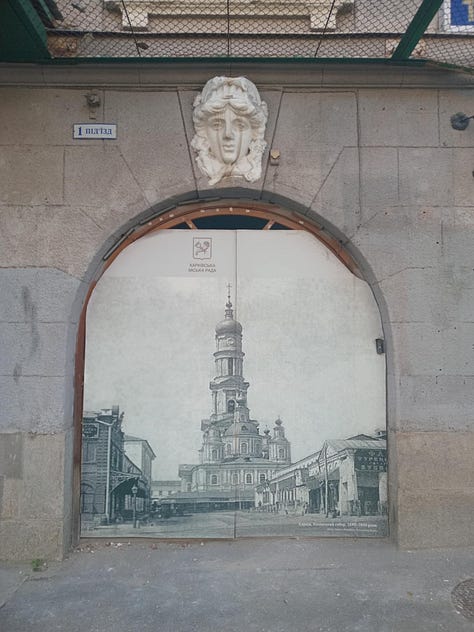

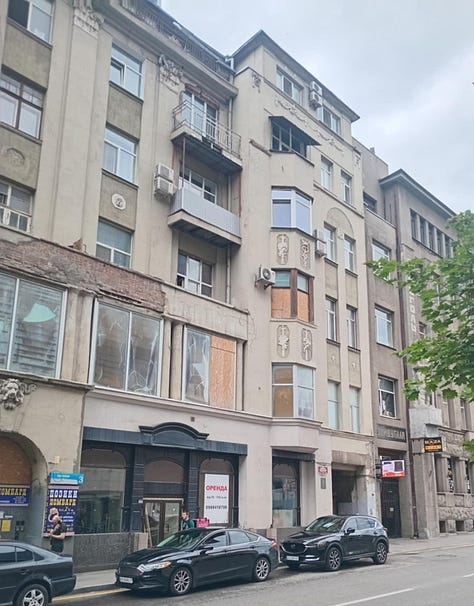
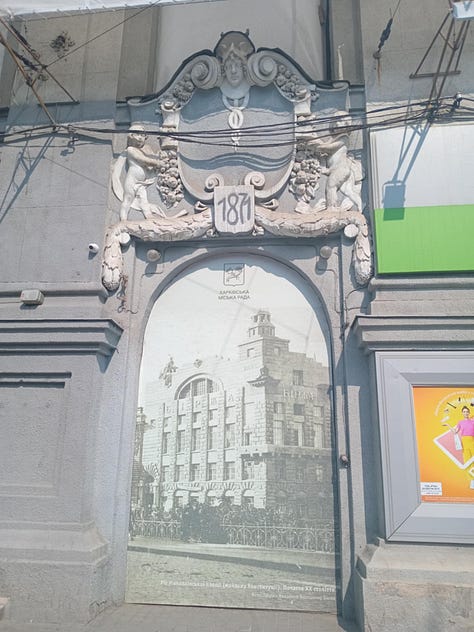
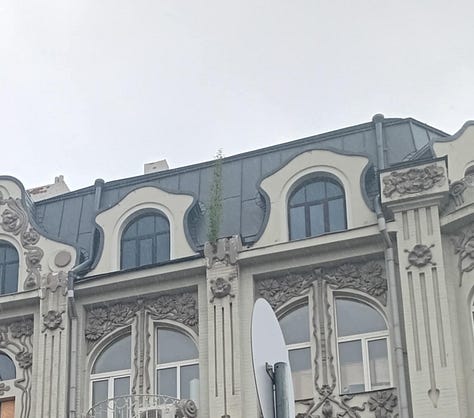
Kharkiv features a large number beautiful, older, ornate buildings, although some of them are suffering from the war, and some from age.

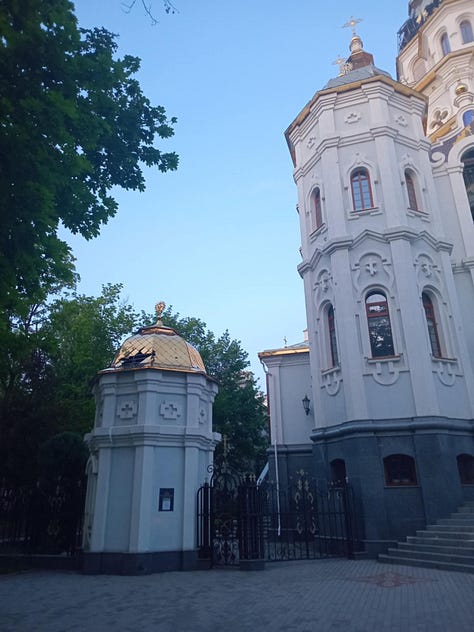
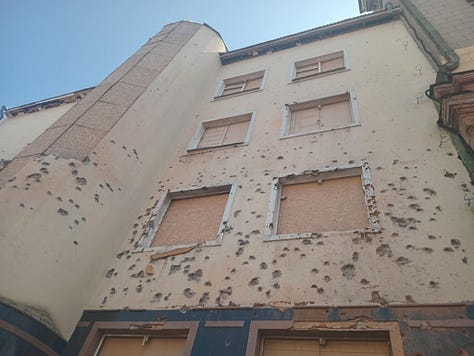
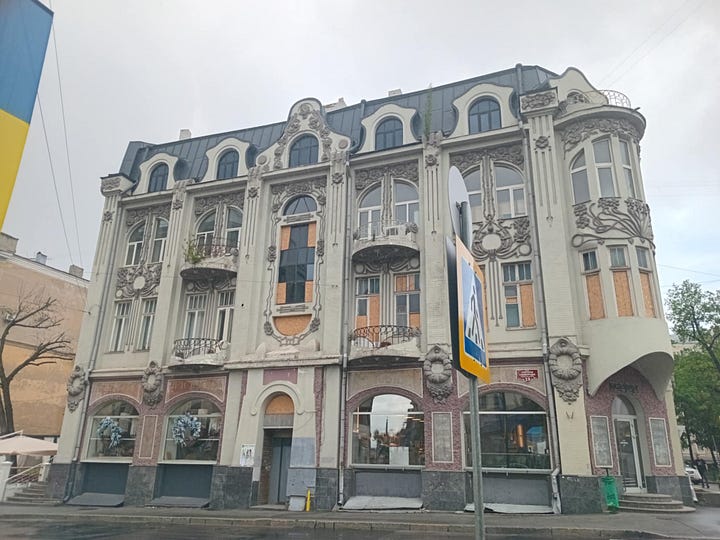
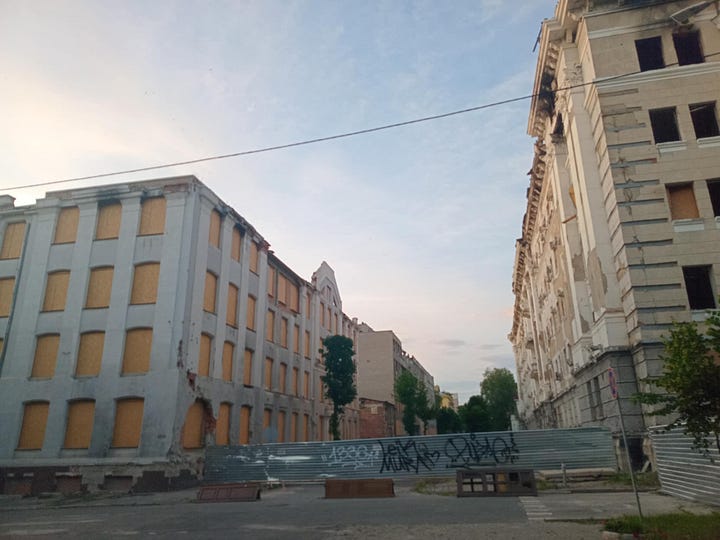
Like some of Kharkiv’s monuments, some buildings are partially covered due to extremely valid concerns about flying shrapnel and bomb blasts. Kharkiv is close enough to Russia, and close enough to the front line to be bombed every day. Whether it is large drones, giant glide bombs (four huge KAB bombs landed near my hotel while I was there), or missiles of every type, Russia hammers Kharkiv every day in its efforts to erase Ukrainian culture, futile attempts to break Ukrainians will, and Russia’s endless efforts to wipe Ukrainian cities off the map. Kharkiv stands tall though, being a very vibrant city, very much alive, despite the daily terror attacks, destruction of buildings and infrastructure, injuries, and deaths. Kharkiv has everything a large, urban, modern city has, from lots of electric cars, and many elegantly dressed women, to a lively night life. Kharkiv refuses to be dominated.
Like a number of cities of Ukraine, Kharkiv has been awarded “Hero City” status for its war-time travails, depicted here in the two images above, and the next below. “Misto” is city, and in Ukrainian the ‘X’ is for a sort of Kh sound, the rest you should be able to sleuth out.
I tried to include the audio files I recorded of Shaheds diving towards me and impacting near me, but I am technologically challenged and cannot figure out how to include them here. Imagine the classic World War Two movie sound effect of a Dauntless or Stuka dive-bomber hurtling down towards you, punctuated by a very loud blast nearby. The diving sound, particularly when it sounds like it is headed right towards you, I am not ashamed to admit, is rather frightening. I don’t think anything I have experienced here has raised my hackles like the four close Shahed impacts I had in Kramatorsk recently. Not a 120 millimeter mortar zeroing in on me when I was standing in the open, nor artillery impacts close enough to our bunkers to shake them, occasionally loosing a bit of earth from the walls or ceiling, or anything else. In Kharkiv, it was the big KAB glide bombs that really made an impression though. Like Kramatorsk, Kharkiv is close enough to the front line to have these indiscriminately tossed into the city on a very regular basis. I have had a number of KAB’s land near me, in Kramatorsk, Kharkiv, and at the front line, but there is something about the contrast of a big city going about its business and huge bombs landing near to you in it that really struck me. No pun intended.
Kharkiv is Ukraine’s second largest city, before 2022, it had a population of about 1.5 million people. Surprisingly, despite the city changing hands five times during World War Two, a large amount of pre-war, pre-Soviet architecture survives. Like Odesa, parts of Kharkiv’s architecture reminded me of San Francisco, with ornate older buildings, some with turrets and other architectural details reminiscent of quintessential San Francisco architecture.
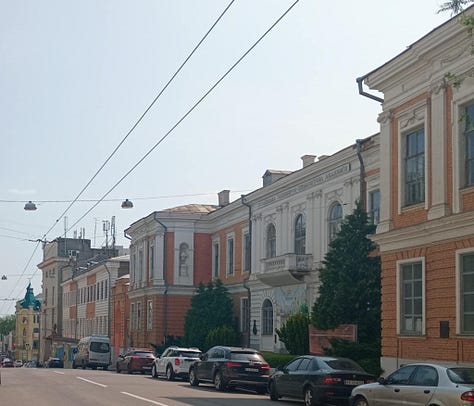
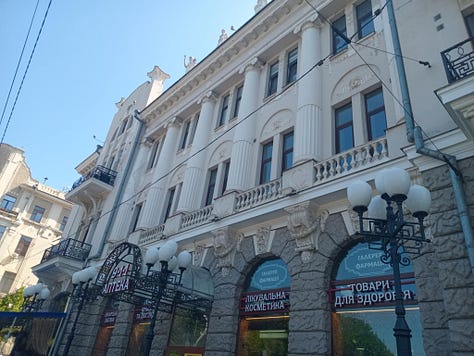
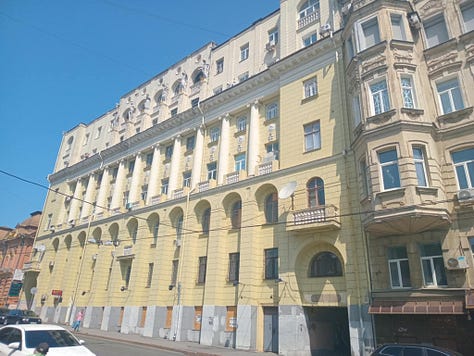
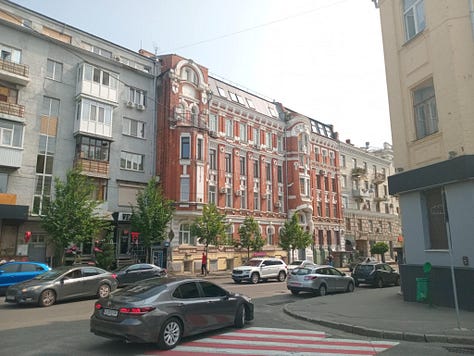
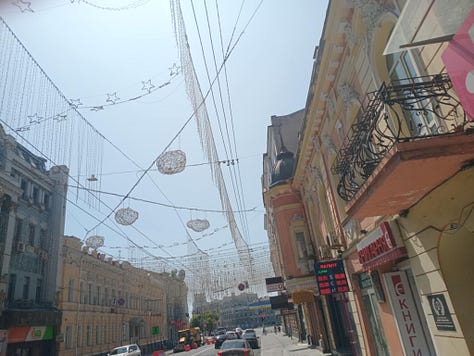
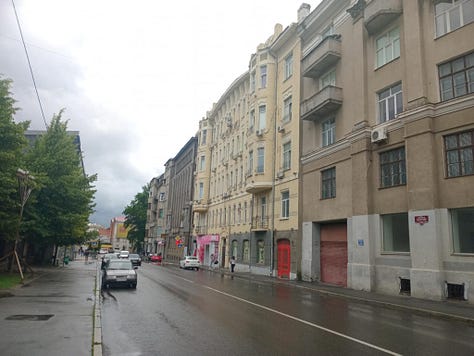

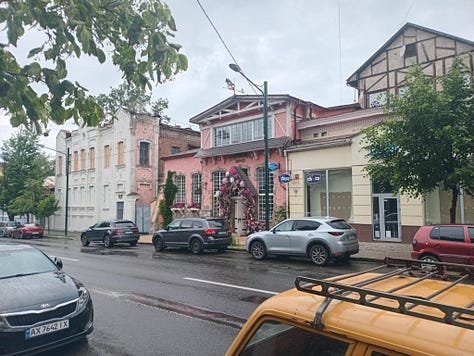
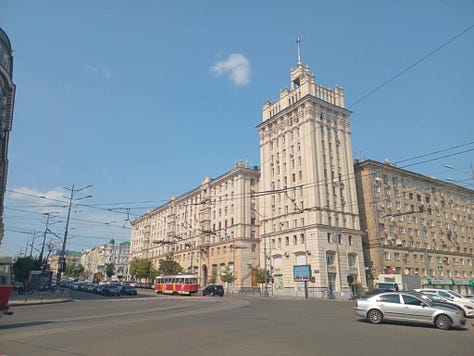
Kharkiv dates its’ founding to more than 370 years ago.
My tastes run counter to some norms sometimes, I appreciate a weathered, somewhat decrepit building on occasion. I embarrassed a citizen of Odesa by photographing a distressed older building there once. She stopped and chatted me up for some time, trying to apologize for the state of some of that fine city’s buildings, lamenting that more wasn’t done to restore them, and I think, trying to convince me to take different pictures of her hometown. On the one hand, I understood her embarrassment to a degree, but on the other hand, as I said, I appreciate some buildings showing their age.
This one in Kharkiv in particular, struck me. I loved the textures and mix of colors present here:
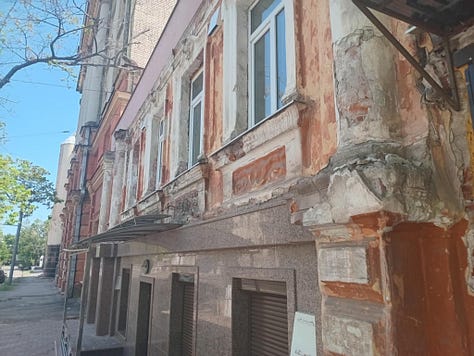
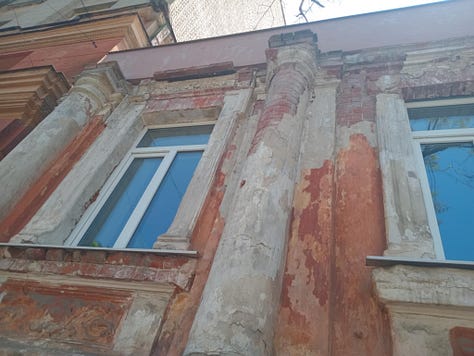
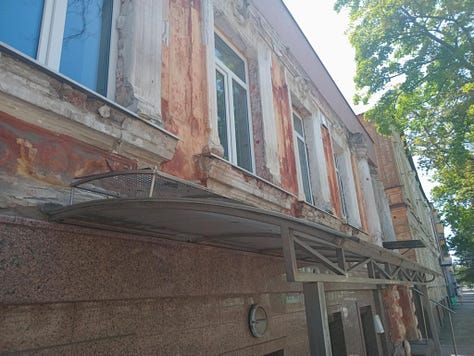
I liked the below one for similar reasons. I also really like it when I see nature growing out of buildings, particularly trees. When I see that, I will almost always stop to take a picture, if I am able to.
I also have an appreciation for Brutalist and Constructivist architecture. I will likely have a post up this week on a famous Constructivist building in Kharkiv that has miraculously survived both World War Two and this war. So far, anyway.
I like contrasts. Kharkiv has a lot of perspectives that show older, surviving buildings alongside modern construction.

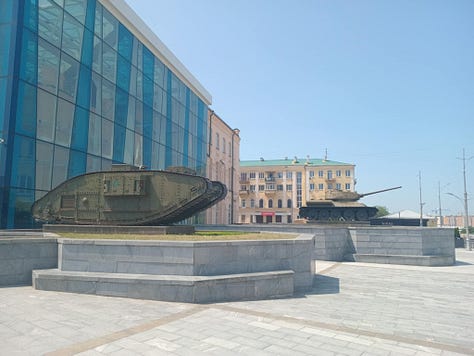
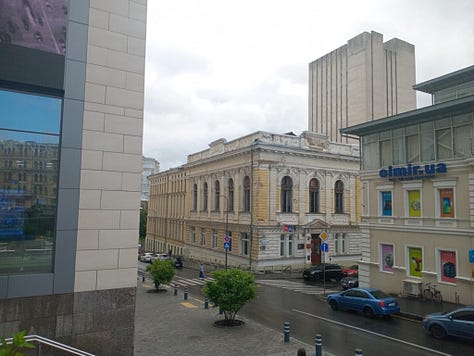

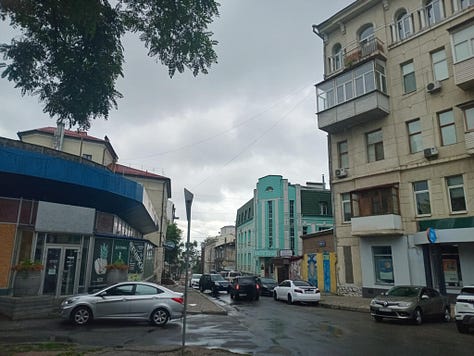
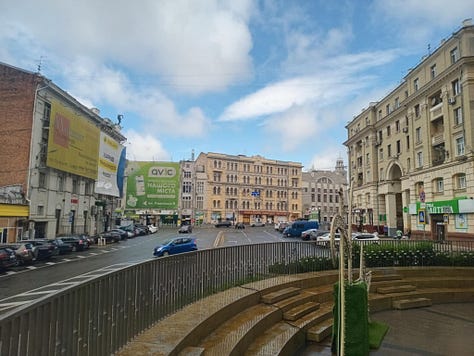
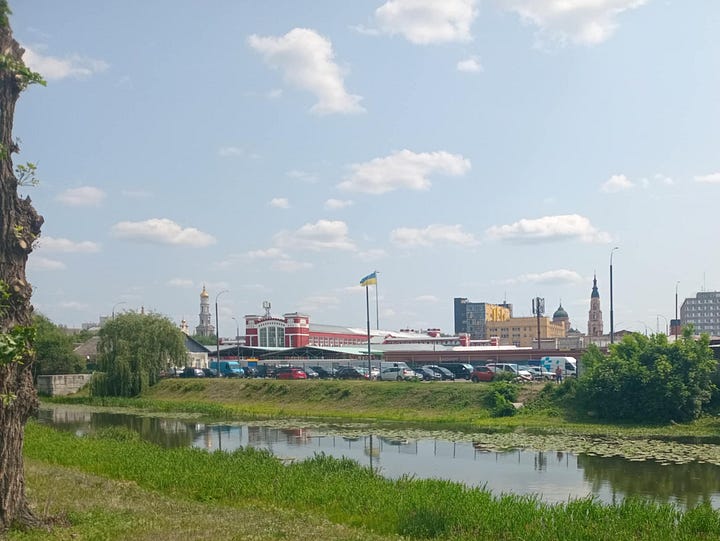
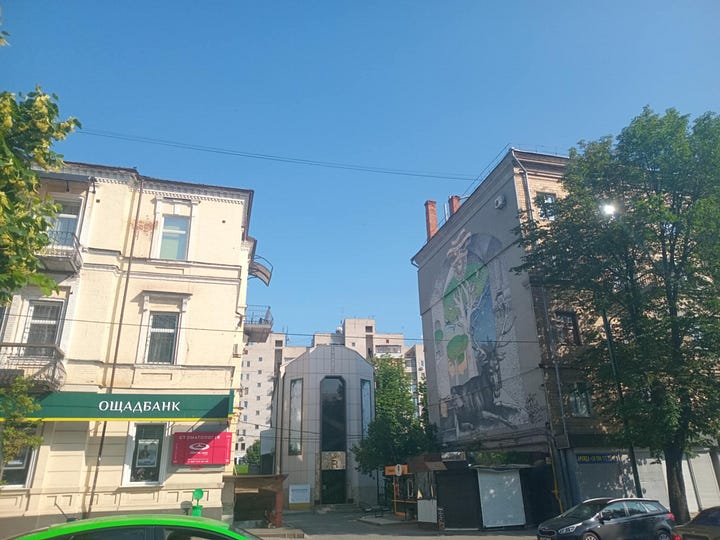
That third to last one above, the steps in the foreground are part of a plaza at the entrance to a modern mall. The one before that, with the green building at the center, shows a Victorian era building contrasted with a Stalinist era building, and a small modern, shopping center to the left.
It’s not often I take pictures of religious buildings, but Kharkiv had a couple that really struck me:
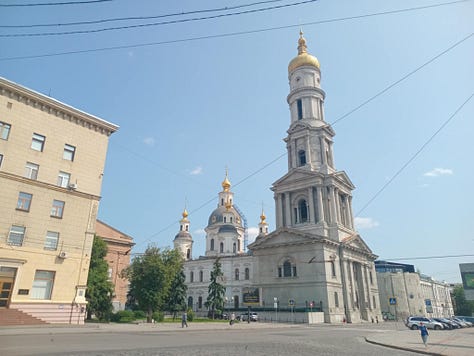
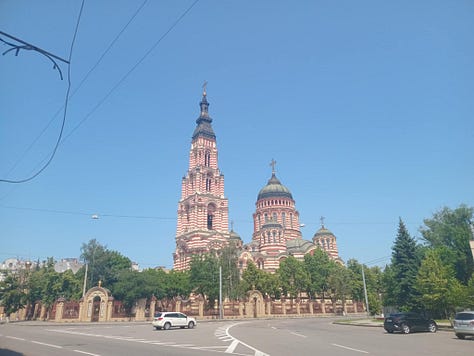
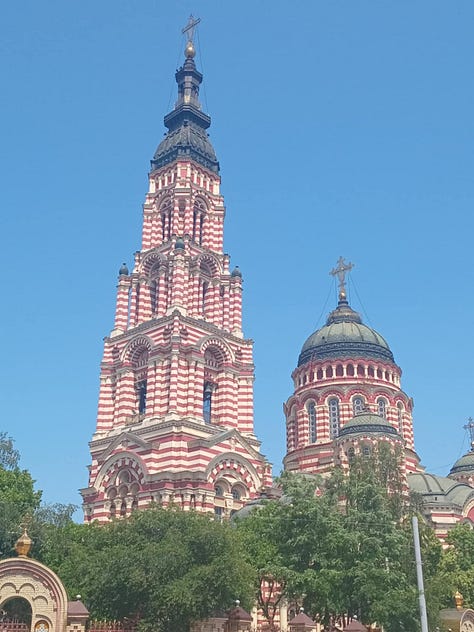
Lastly, for this piece, a catch-all mini-album of buildings I found interesting, but didn’t really fit into any of the above categories:

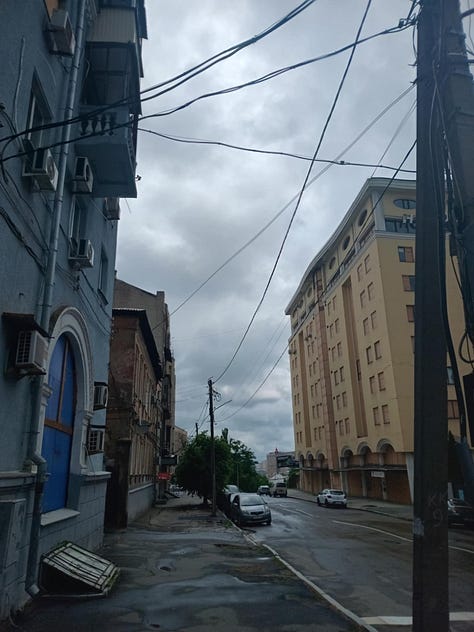
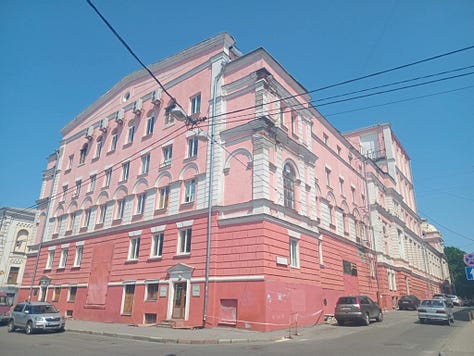
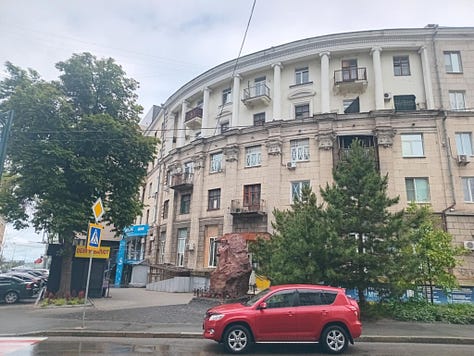
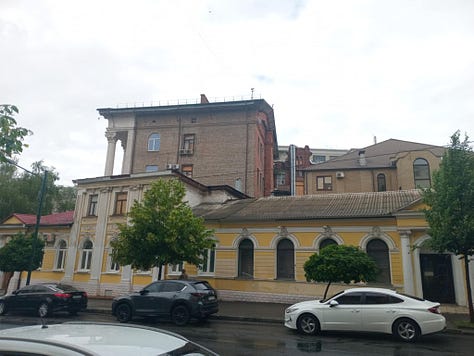
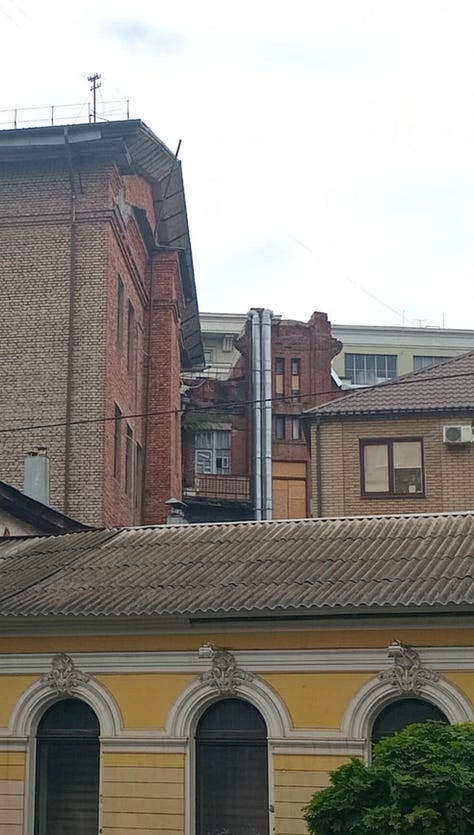
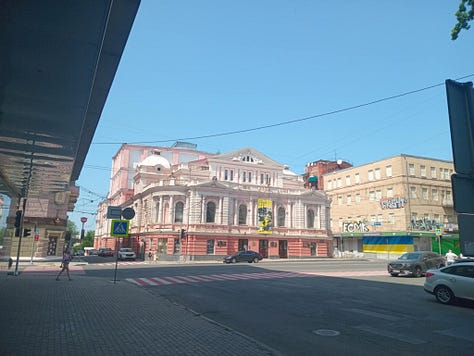
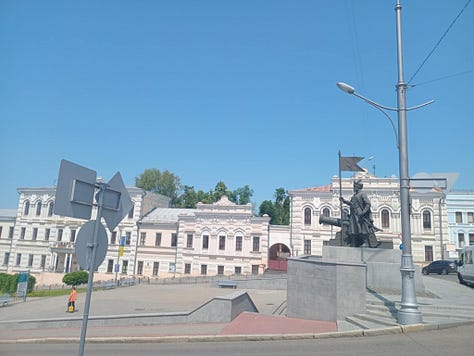
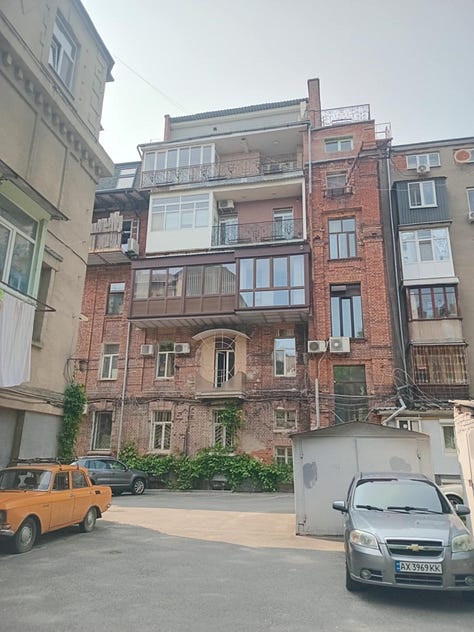
That last one is a rare view of the backsides of these buildings. Most of them are arranged in a square, with a courtyard in the center. That last picture was taken from in front of my hotel, which only fronted onto the courtyard.
Always a little disconcerting when standing over a spot that a munition has landed before.
.
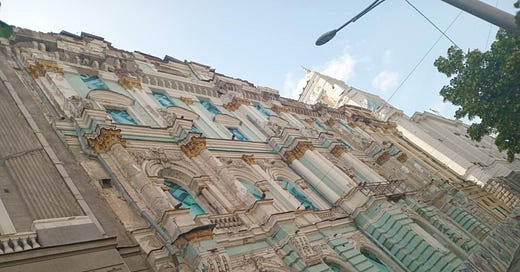




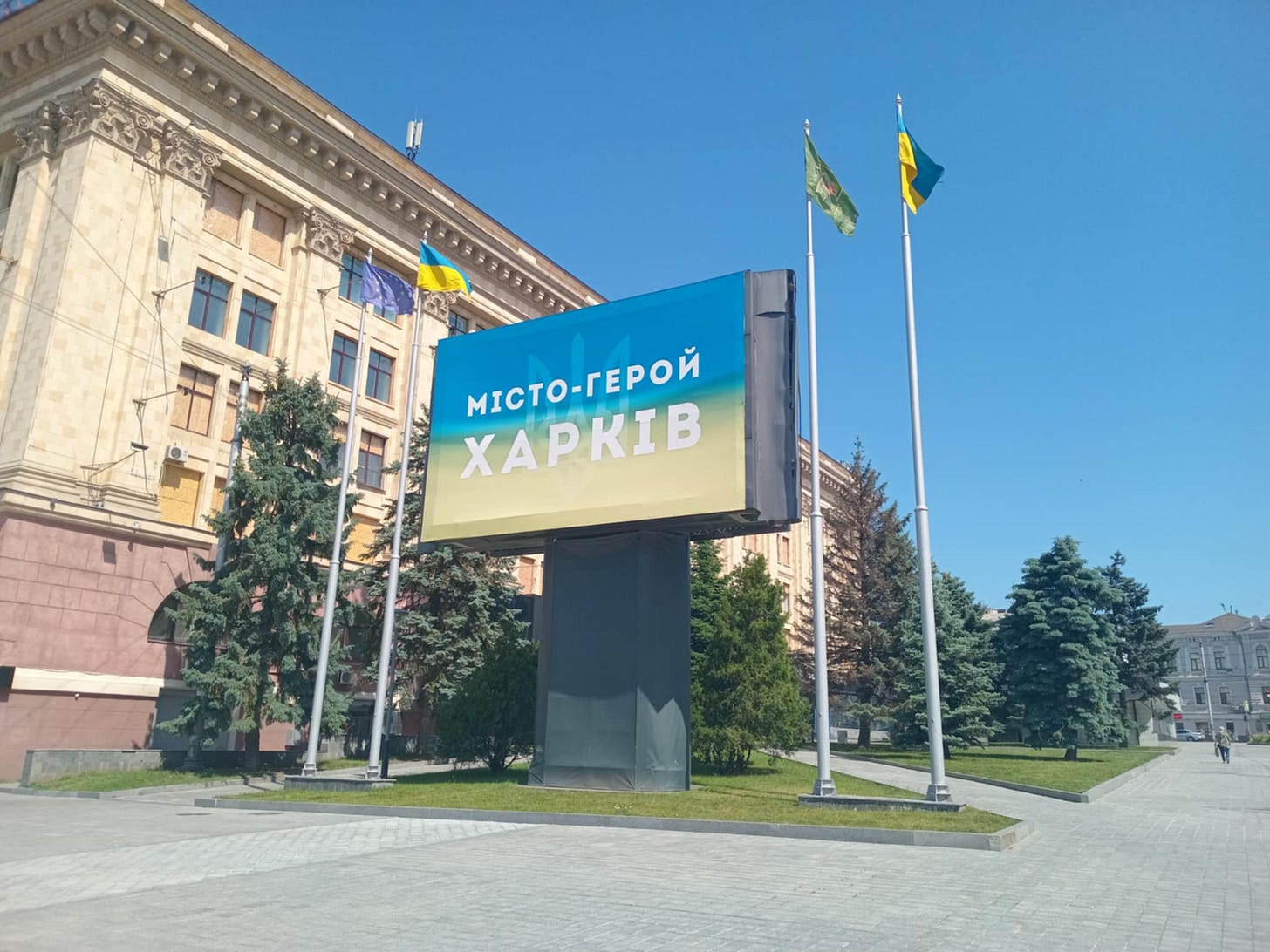
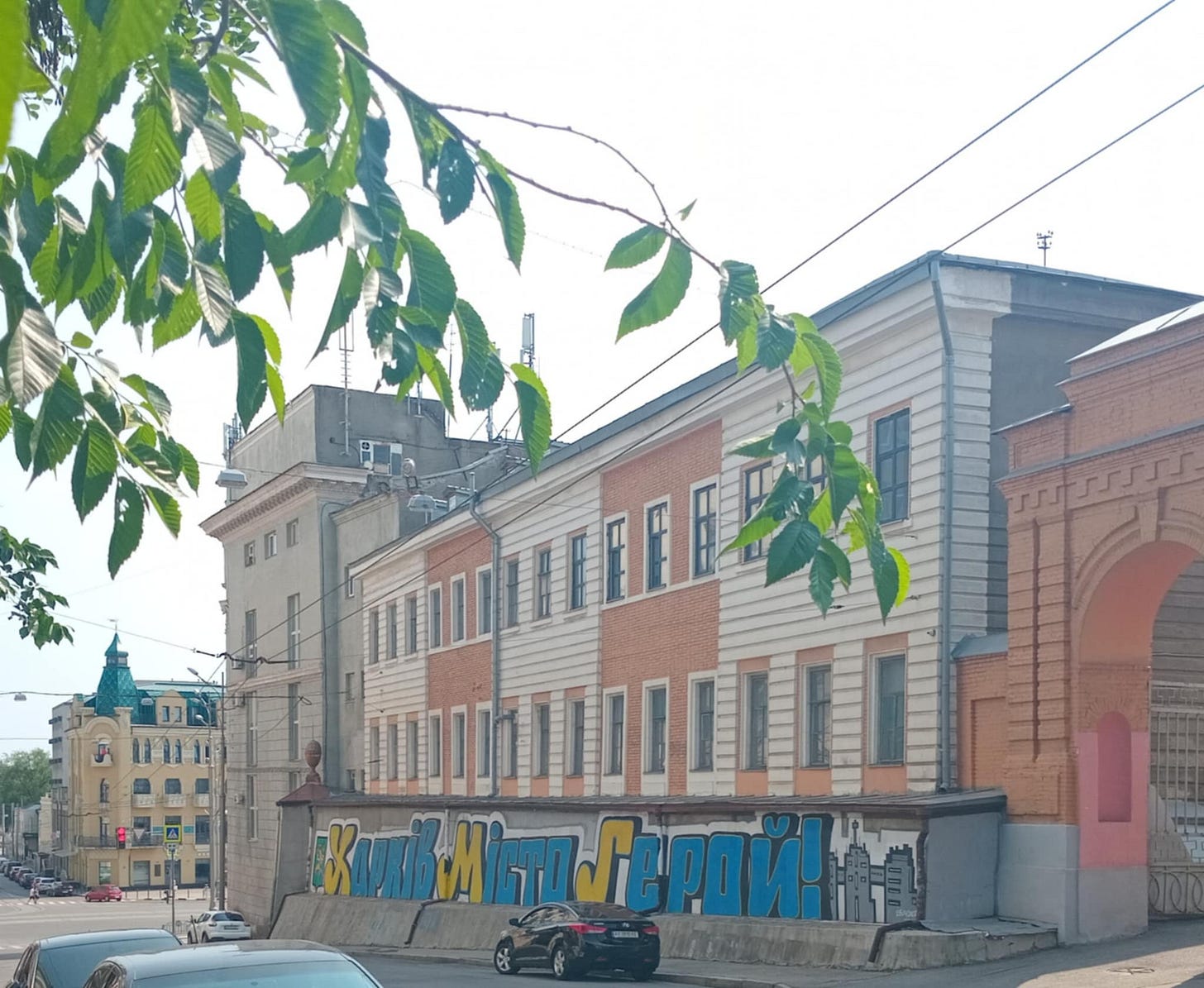
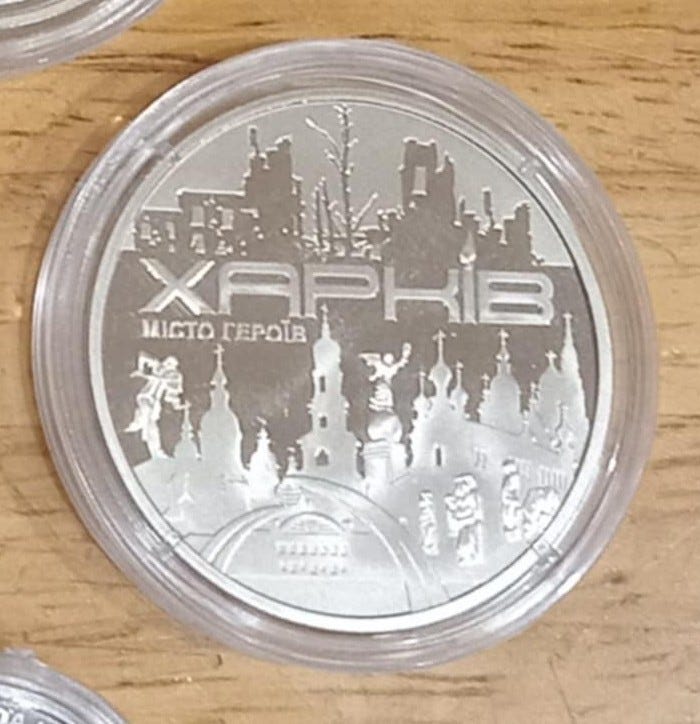
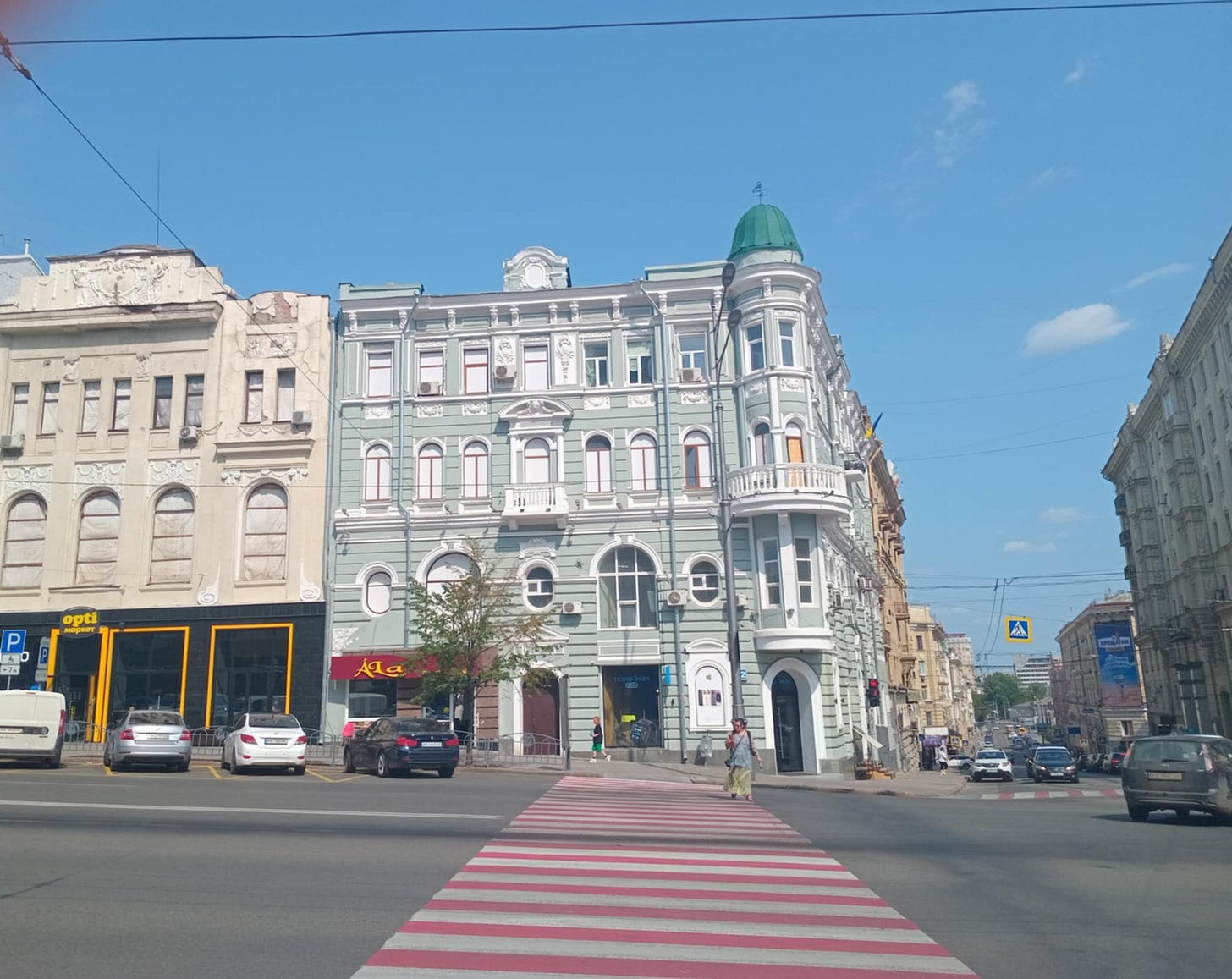

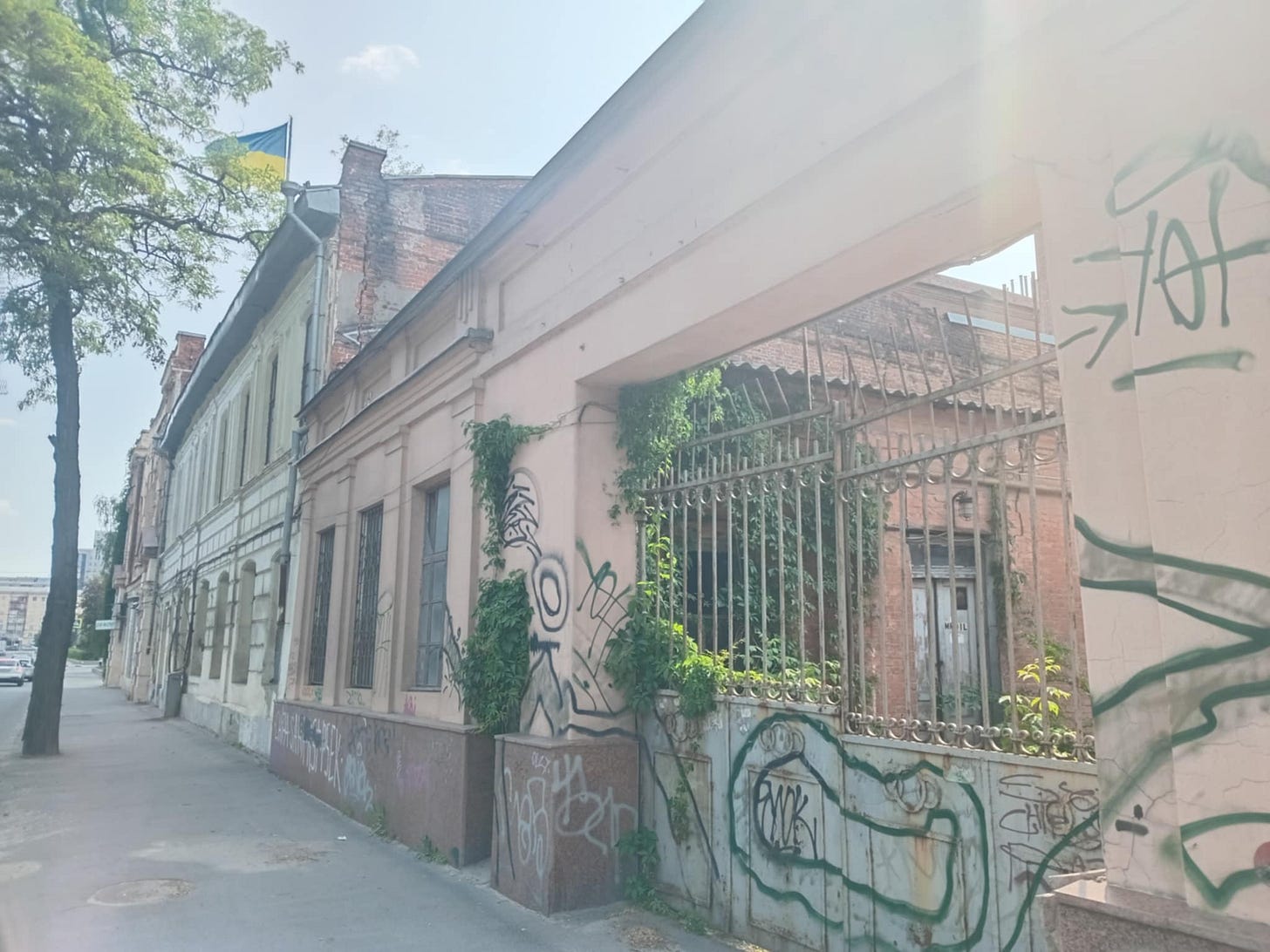
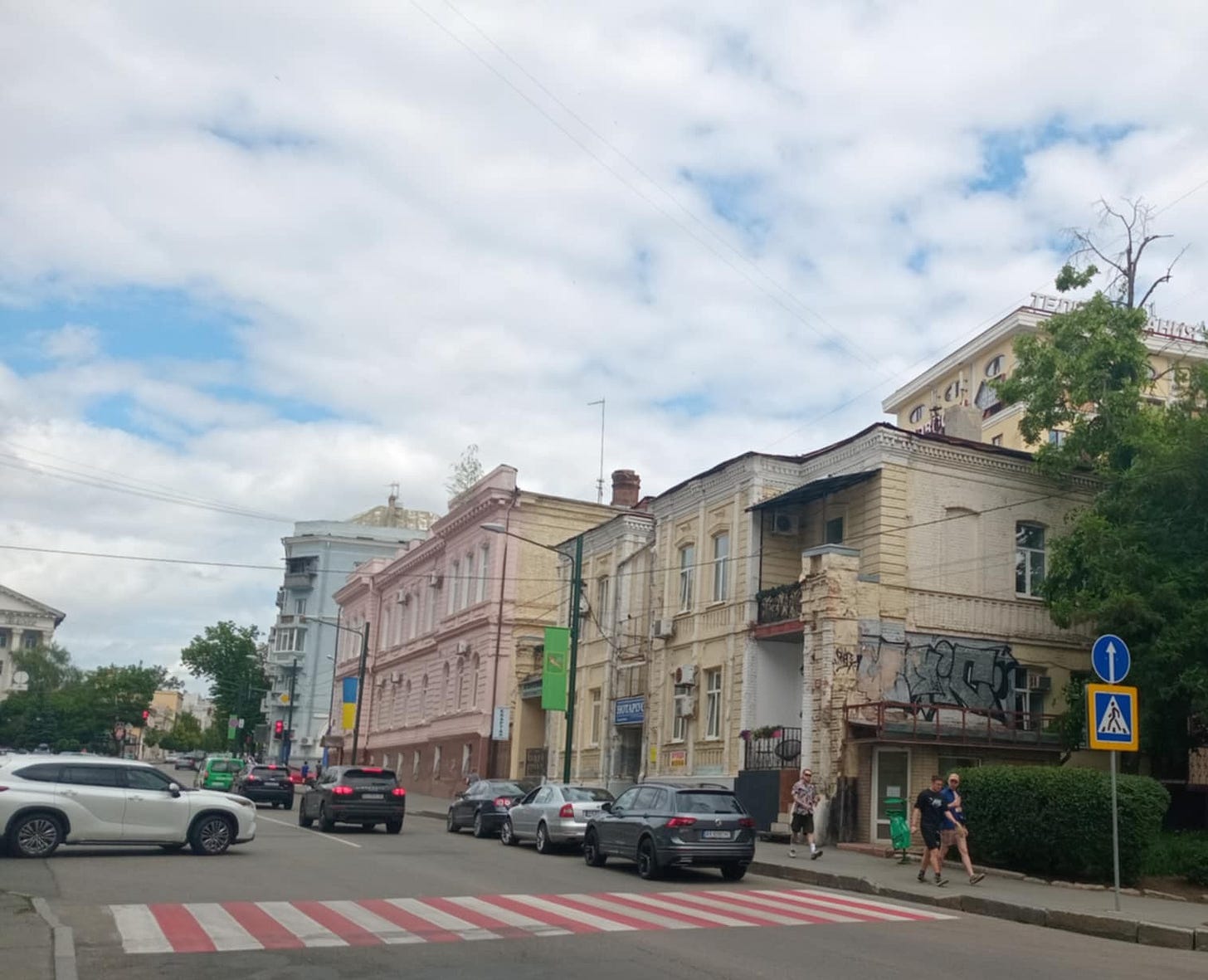
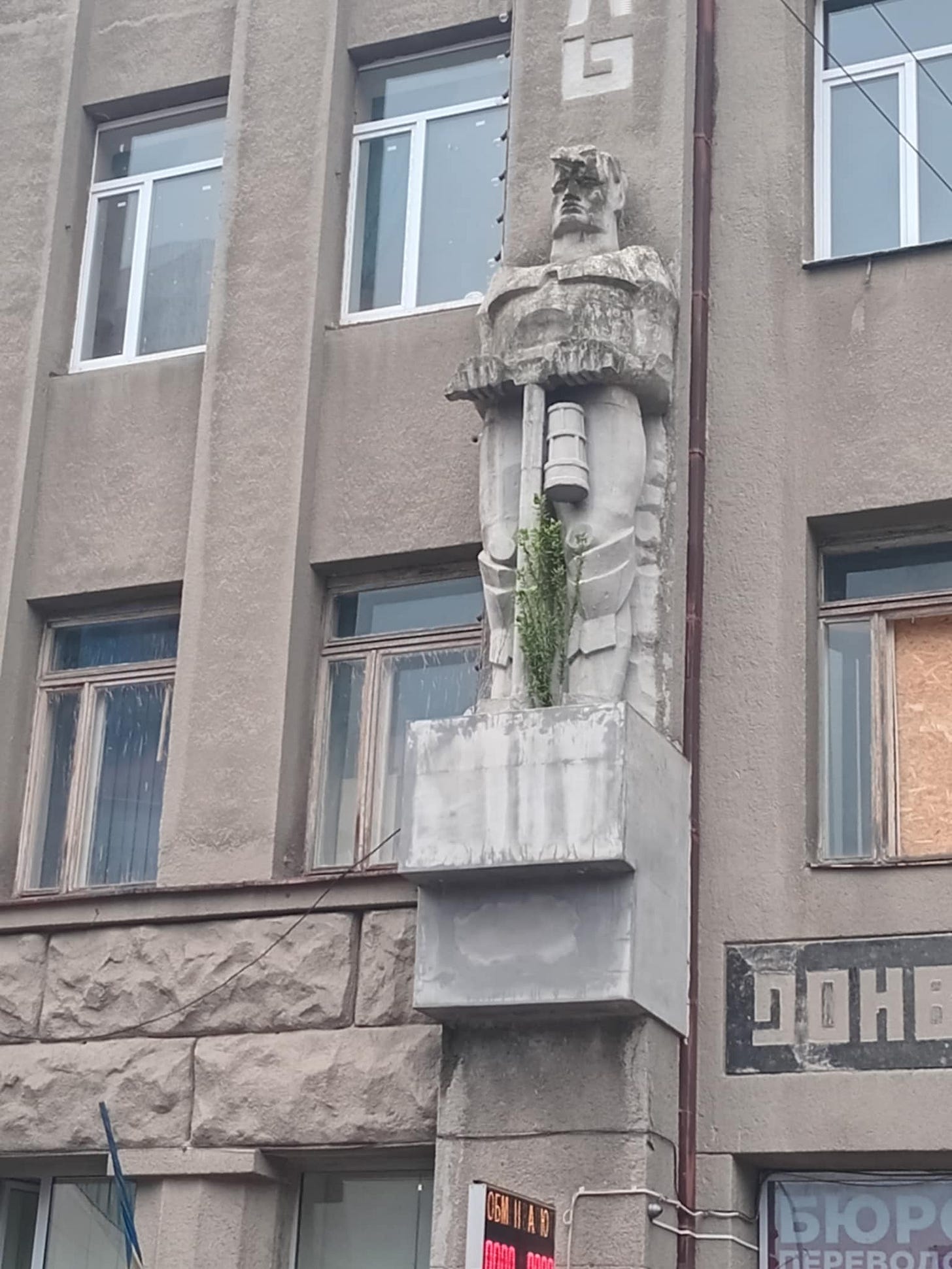

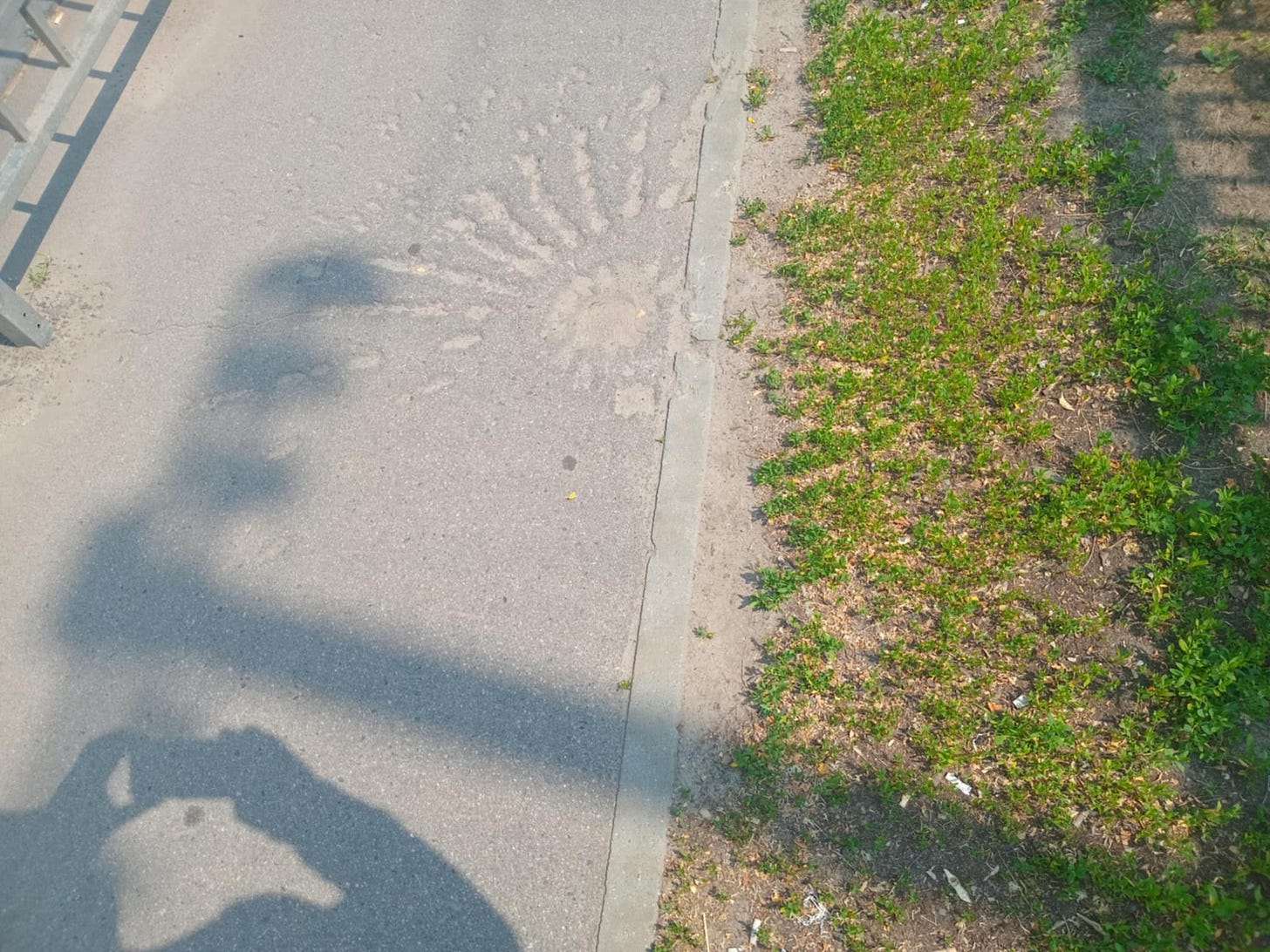
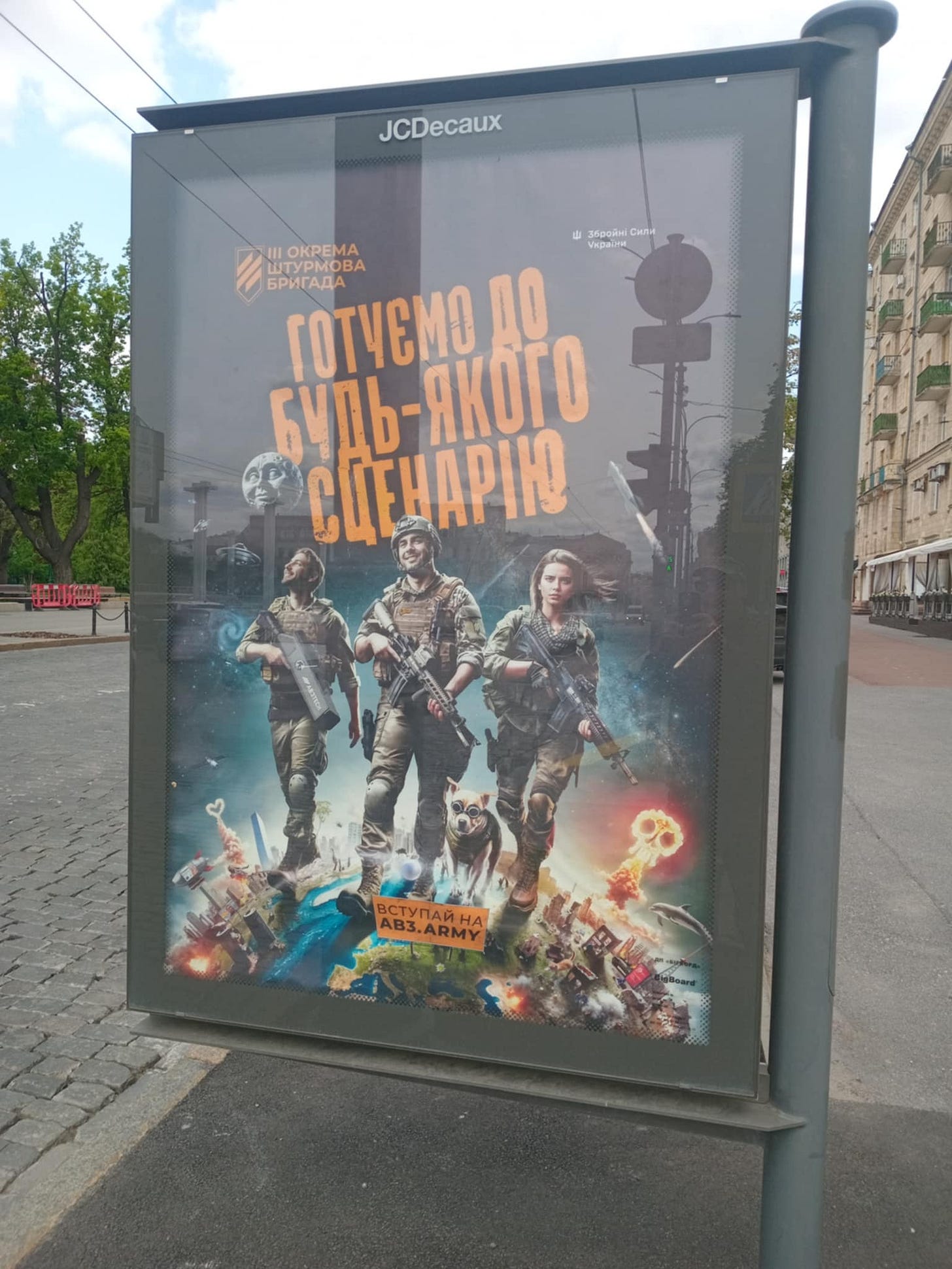
Nice! Sending good thoughts to you. Dewey ;)
Nice , beautiful architecture. What's the building with the English WW1 and the T34-85( I think) out front?